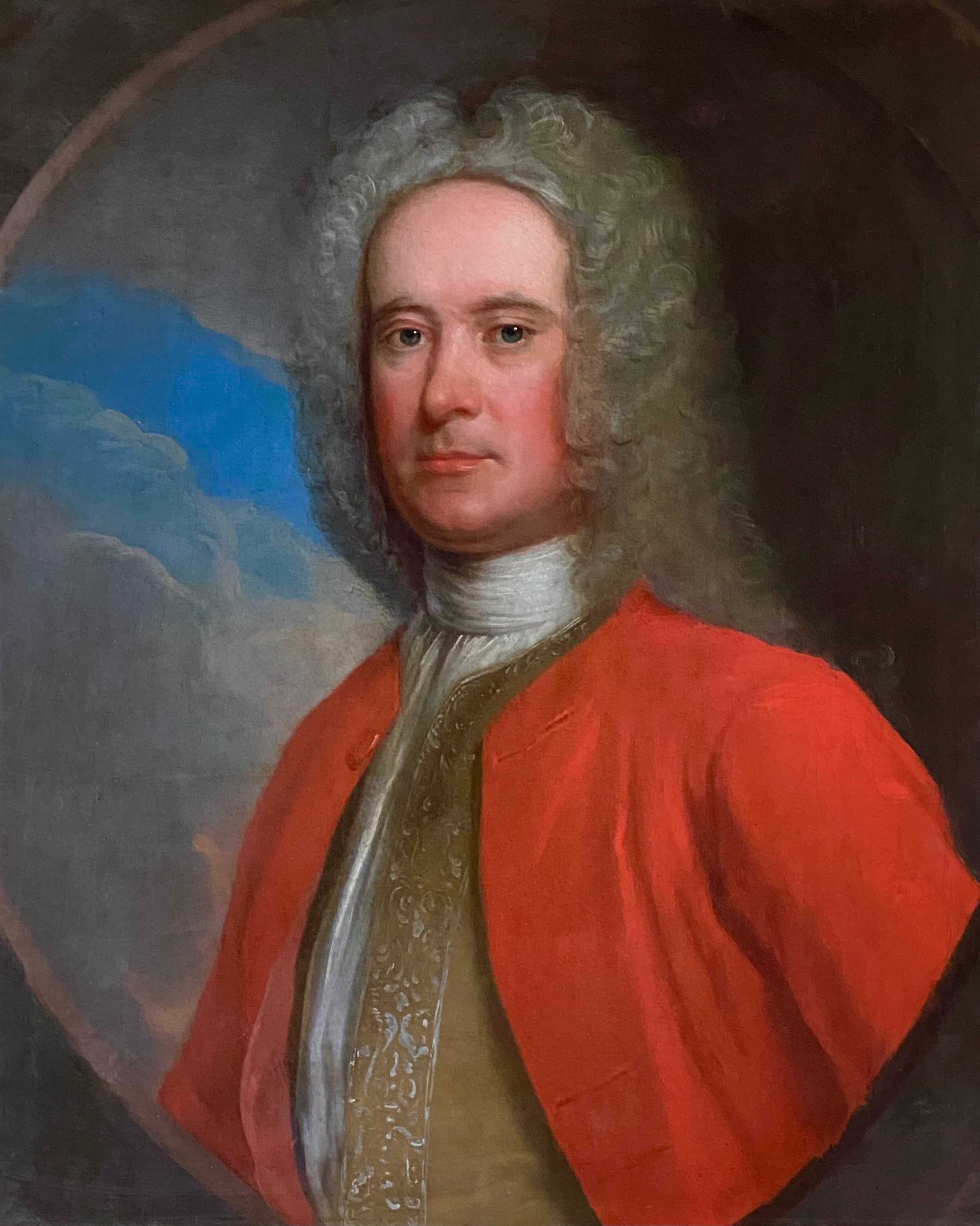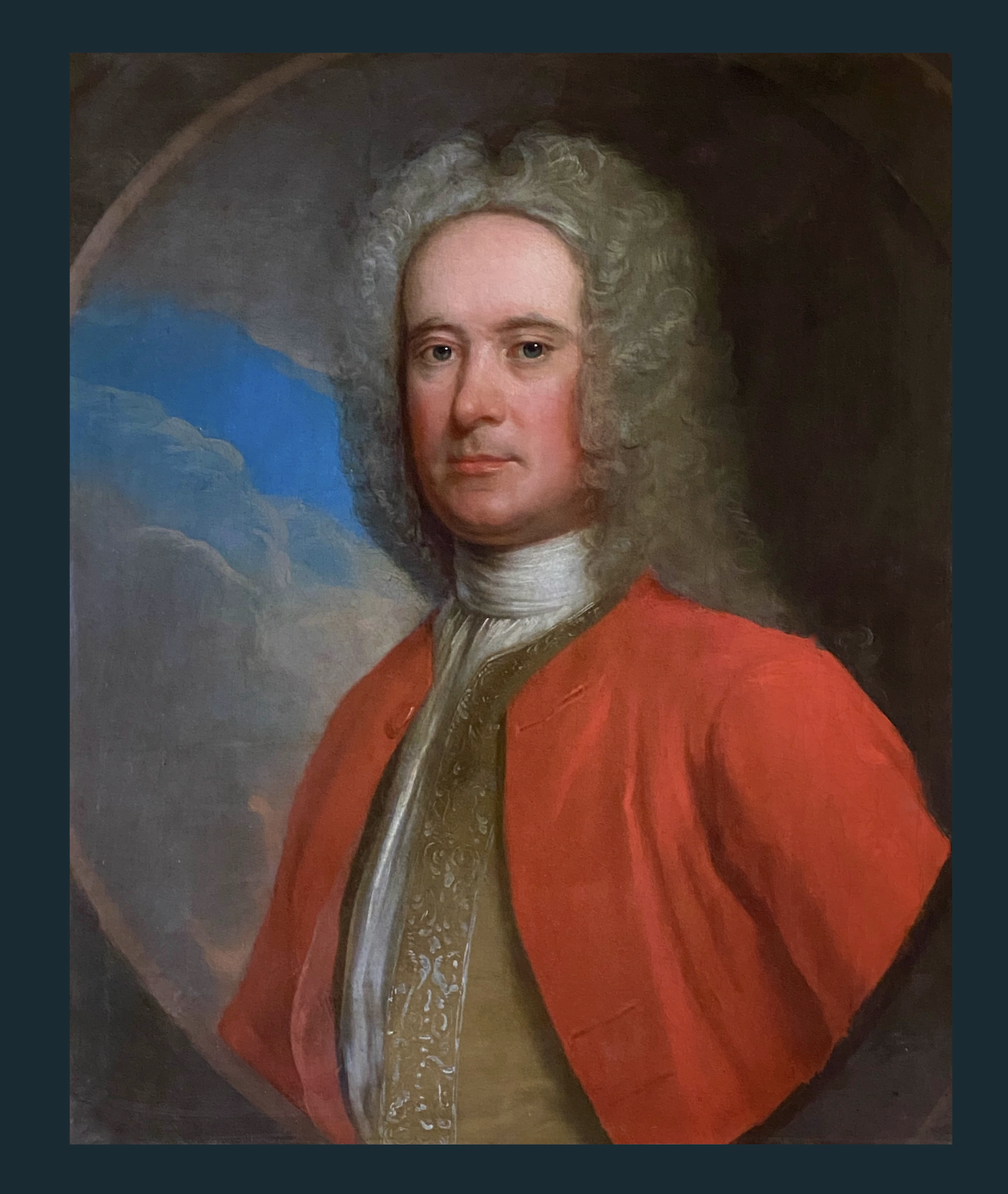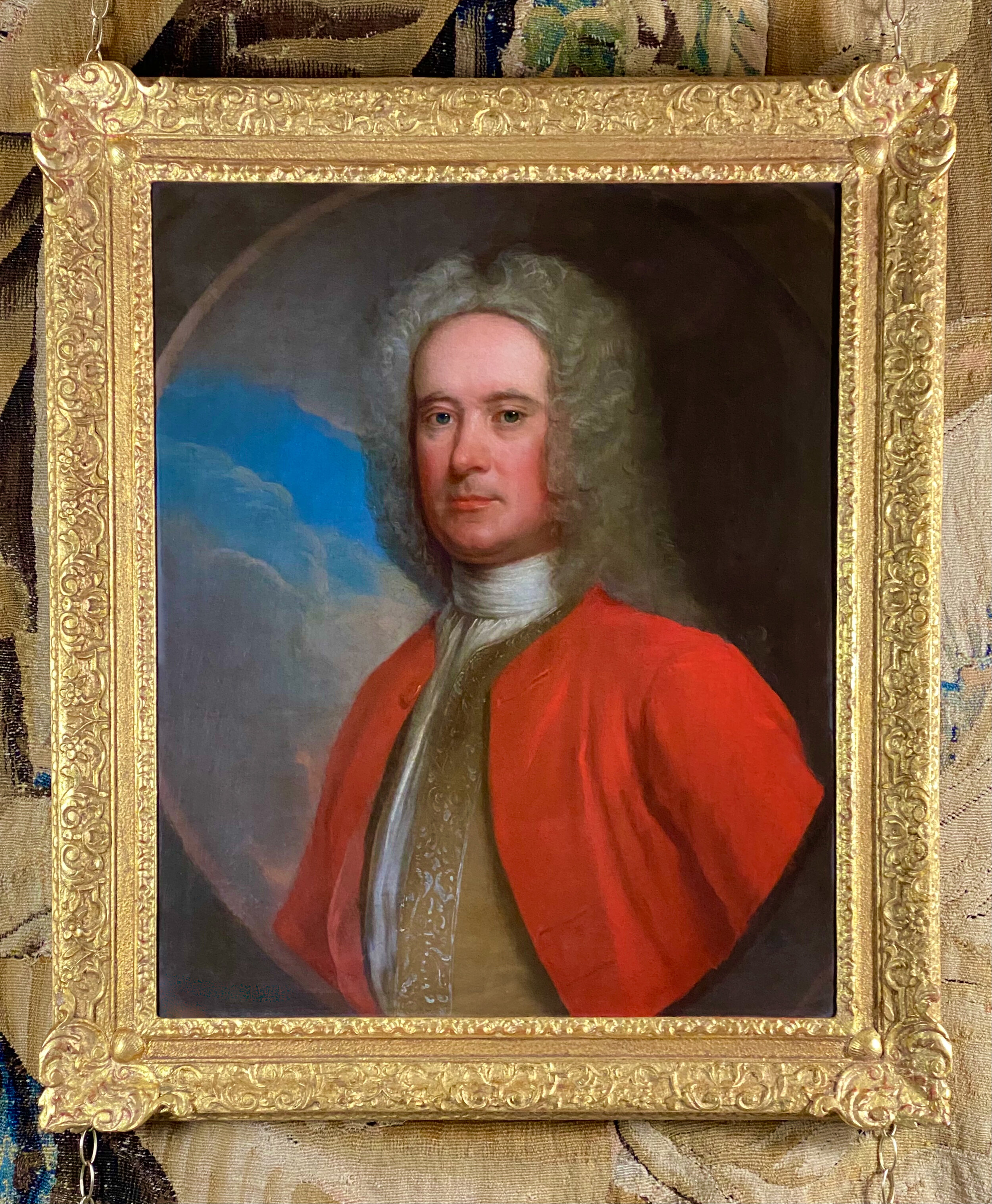





18TH CENTURY PORTRAIT OF ARCHIBALD CAMPBELL, 3RD DUKE OF ARGYLL - CIRCLE OF WILLIAM AIKMAN (1682-1731)
Period Portraits are thrilled to offer this fine and richly coloured early 18th century Scottish school portrait of a gentleman traditionally identified as Archibald Campbell, 3rd Duke of Argyll (1682-1761) by an artist in the circle of William Aikman (1682-1731) Dating to the 1720s or ‘30s, the portrait shows Campbell when he was Earl of Ilay and at the height of his political powers.
It shows the sitter at three-quarter length against a neutral sky with the whole bounded by a feigned oval, the composition of this portrait is typical of that used by Aikman and other artists in this period. Fine details such as the delicate highlights in the face and the embroidery of the waistcoat suggest a distinguished hand, possibly even that of Aikman himself.
The son of Archibald Campbell, 10th earl and 1st Duke of Argyll (d. 1703), Campbell, later the third Duke of Argyll, was born into one of the most powerful families in Scotland. Educated first at Eton and then the University of Glasgow, Ilay trained at first to become a lawyer, before turning his attentions to politics in 1705 when he was appointed lord treasurer of Scotland by Queen Anne. Brought in to help pave the way to the union between the kingdoms of England and Scotland, Ilay – as he was known from 1706 – was an important power broker, who, with his elder brother John Campbell 2nd Duke of Argyll (1680-1743), was pivotal in ensuring the 1707 Act of Union. As a result of this, he became one of the sixteen representative peers chosen by the Scottish nobility to represent them in the House of Lords following the Act of Union, and was re-elected as such at every election for the rest of his life but one. In 1711 he was appointed Lord Justice-General to Scotland by Queen Anne and, thus, head of the country’s criminal court.
With his brother, Ilay was firmly on the side of the Hanoverian succession when it came in 1714. His participation in the 1715 Battle of Sheriffmuir, which put down an unsuccessful Jacobite rebellion, served only further to strengthen his credentials as an establishment man. These years, however, were not ones of uninterrupted success for Ilay, who suffered from the factional divisions within the Whig political party. As a firm supporter of Sir Robert Walpole (1676-1745), however, Ilay backed the right horse and found that, with Walpole’s rise, his influence in Scotland was essentially unshakable, making him, without a doubt, the leading Scottish politician of his day. He succeeded the dukedom of Argyll on the death of his brother in 1743.
Ilay’s political ascendancy resulted in one of the most significant events of the history of Scotland in the eighteenth century – the founding of the Bank of Scotland. This Ilay was able to bring into being thanks in no small part to his close political friendship with Walpole. The bank was founded by a royal charter after the accession of George II in 1727 with Ilay serving as its first Governor. The system pursued by the Royal Bank of Scotland, based on the issue of paper currency, has been identified by historians as one of the driving forces of the Scottish economic development of the late eighteenth century, which produced many of the figures who would lead the Industrial Revolution. Ilay’s monumental role in founding this bank has won him a place in the everyday life of those living in Scotland, with Ilay’s likeness to this day featuring on all banknotes printed by the Royal Bank of Scotland.
The likeness of Ilay used on these banknotes is taken from a 1744 portrait painted by Allan Ramsay (1713-84). Ilay was a noted patron of the arts, commissioning no fewer than nine likenesses from Ramsay alone over the course of his life. This work, however, appears to show the Duke in earlier life, and may relate to a work by William Aikman, whom Ilay and his brother both patronised.
This fine portrait is in an excellent state of conservation and is ready to hang and enjoy in its original refinished, hand carved and gilded 18th century frame.
Canvas: 25” x 30" / 64cm x 77cm. Frame: 31" x 36” / 79cm x 92cm.
Internal Ref: 00153
Price: £6950

